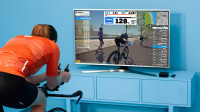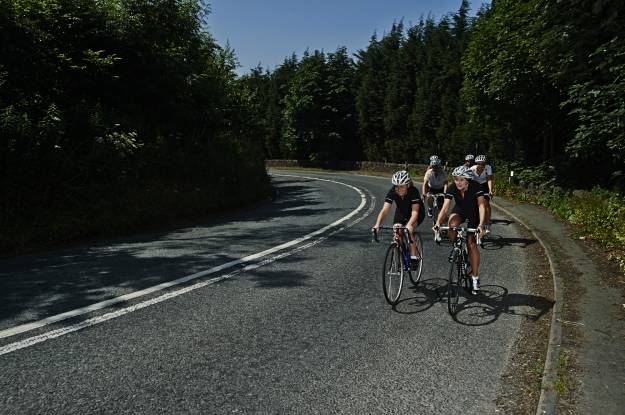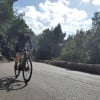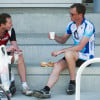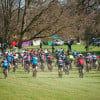Knowledge Level: Intermediate
Whether you’re on a long training ride, taking part in your main target event for the year or enjoying some winter sun on a training camp, digestive or GI (gastrointestinal) distress can rapidly turn pleasure into misery, end your event or consign you to your hotel room. Your digestive system is how you convert food into useable fuel for your cycling engine so, if it isn’t functioning optimally, your performance will suffer. Follow this advice from Healthspan Elite, the Official Sports Nutrition Partner and Official Vitamin and Supplement Partner to the Great Britain Cycling Team and British Cycling, to prevent your gut letting you down.
Pacing
Probably the number one cause of digestive issues on the bike is poor pacing. If you push too hard on a long ride, your body simply won’t be able to process the fuel you’re giving it. Your digestive system requires a supply of blood to function but, if your working leg muscles are demanding too much, your body will reduce the supply to your gut and digestion will slow down or even stop. Any food will remain in the stomach, additional food you try to eat will pile up leaving you feeling bloated and nauseous and, without nutrients being absorbed, you’ll run out of of energy. Eventually, if you keep on trying to push on, your stomach will expel its contents. If this happens, the most effective course of action is to stop, wait until the nausea passes and try to take on some liquid and fuel before setting off again slowly. Realistically though, it’s likely to be the end of any serious riding for that day and prevention is always better than cure.
Practice your pacing on training rides and use your heart rate and power zones to monitor your riding intensity. As a general rule, the body is able to handle food best in Zone 1-2, can deal with reasonably sustained periods in Zone 3 but long blocks of Zone 4 or above can cause problems.
Hydration
As well as a number of other physiological reasons for performance losses, inadequate hydration can lead to issues with digestive function.
A little, often and early approach to hydration, taking a sip from your bidon every 5-10 minutes right from the start of a ride and aiming to consume 500-1000ml per hour, depending on conditions, of electrolyte containing fluids is recommended.
Tried and tested
Use training rides to determine what products and foods work for you on the bike. If you’re entering an event with feed stations, find out what products will be available and try them out beforehand. If you’re unable to do this, consider carrying your own products and food that you know agree with you.
Cycling nutrition for long rides
British Cycling Training Plans
Be kind to your stomach
Hard or prolonged exercise is stressful for your body and for your digestive system so look for products and food that are easy for it to handle. What works for one rider might not sit well with your stomach so it’s essential that you experiment in training and find products and foods that work for you.
Timing and amount
Not allowing enough time to digest your pre-ride meal can cause problems. Ideally give yourself 90-120 minutes before starting riding but, for lower intensity rides and for easy to digest foods such as porridge, this can be sometimes be reduced to 60 minutes.
On the bike, aim to eat little and often from the start of the ride with a target of consuming 0.5-1g of carbohydrates per kilogram of bodyweight per hour in 2-3 “micro feeds” every 20-30 minutes. Do not try to exceed this amount as your body won’t be able to process it and you’ll end up feeling bloated.
Follow these links to nutritional timelines for specific cycling events
Cycling nutrition for long rides
Eating for an evening cycle race
Eating for an early morning time trial
Eating for a morning cyclo-cross race
Healthy villi, healthy gut
The walls of your intestine are covered by millions of tiny finger like projections known as villi. These projections absorb the nutrients from the food you eat. However a poor diet and a number of other factors, such as excessive alcohol, antibiotics and non-steroidal anti inflammatories such as ibuprofen, can lead to the villi becoming unhealthy and ineffective. For any cyclist, especially if your concerned with high performance, poor nutrient absorption is a big problem. Low energy levels and a constant craving for sugary foods can be an indicator that your gut health is not optimal. Fortunately there are a number of steps you can take to improve your villi and gut health.
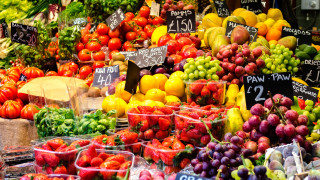
Image provided by Garry Knight under Creative Commons licensing.
Fruits and vegetables
Increasing your intake of fruit and vegetables should be considered a priority for anyone. Five a day should be an absolute minimum. Make your plate as varied, colourful and bright as possible as strongly coloured fruit and vegetables are the best sources of vitamins, minerals and antioxidants. The increased fibre from the fruit and veg will improve gut transit which is beneficial for overall gut health and wellbeing.
Friendly Bacteria
If you create a healthy gut environment you should have a good population of beneficial bacteria which aid digestion and nutrient absorption. However periods of stress, an upset stomach or a course of antibiotics can all deplete your gut fauna. A probiotic supplement can help to replenish your gut fauna.
Elite Sport Essentials
Both Omega 3 and Probiotics are combined, along with a multi-vitamin, in this convenient product that is designed especially to support optimum performance.



